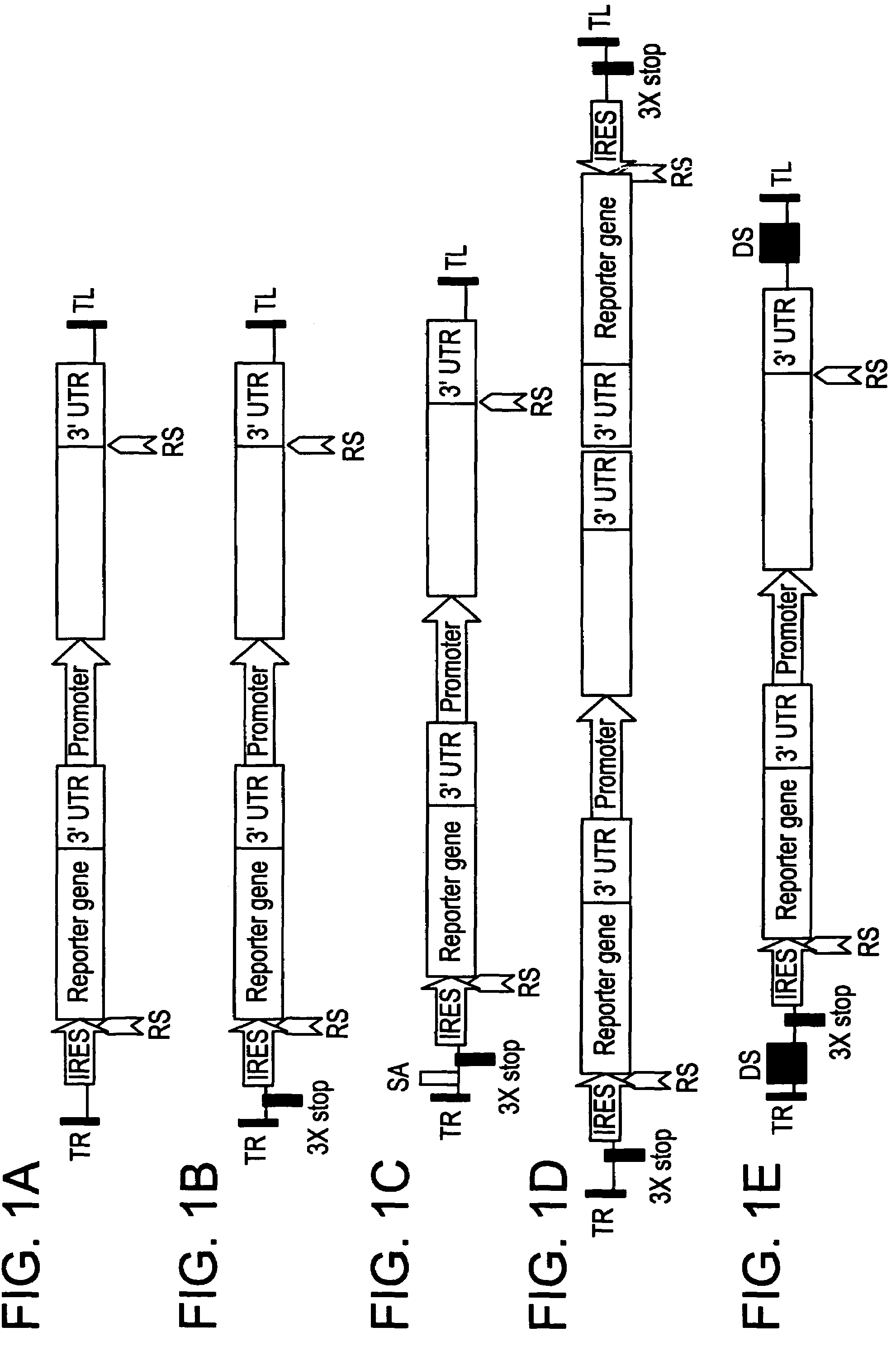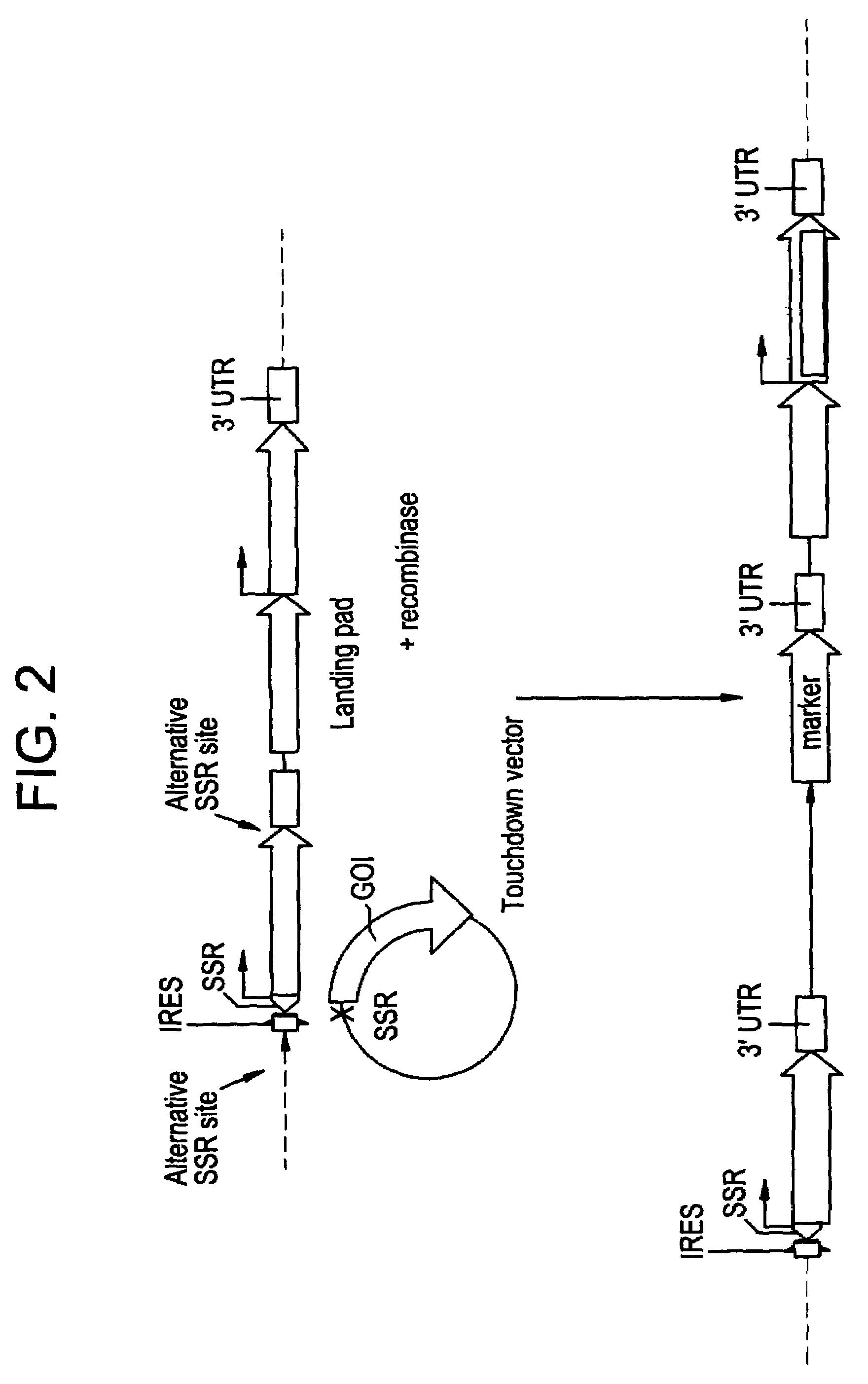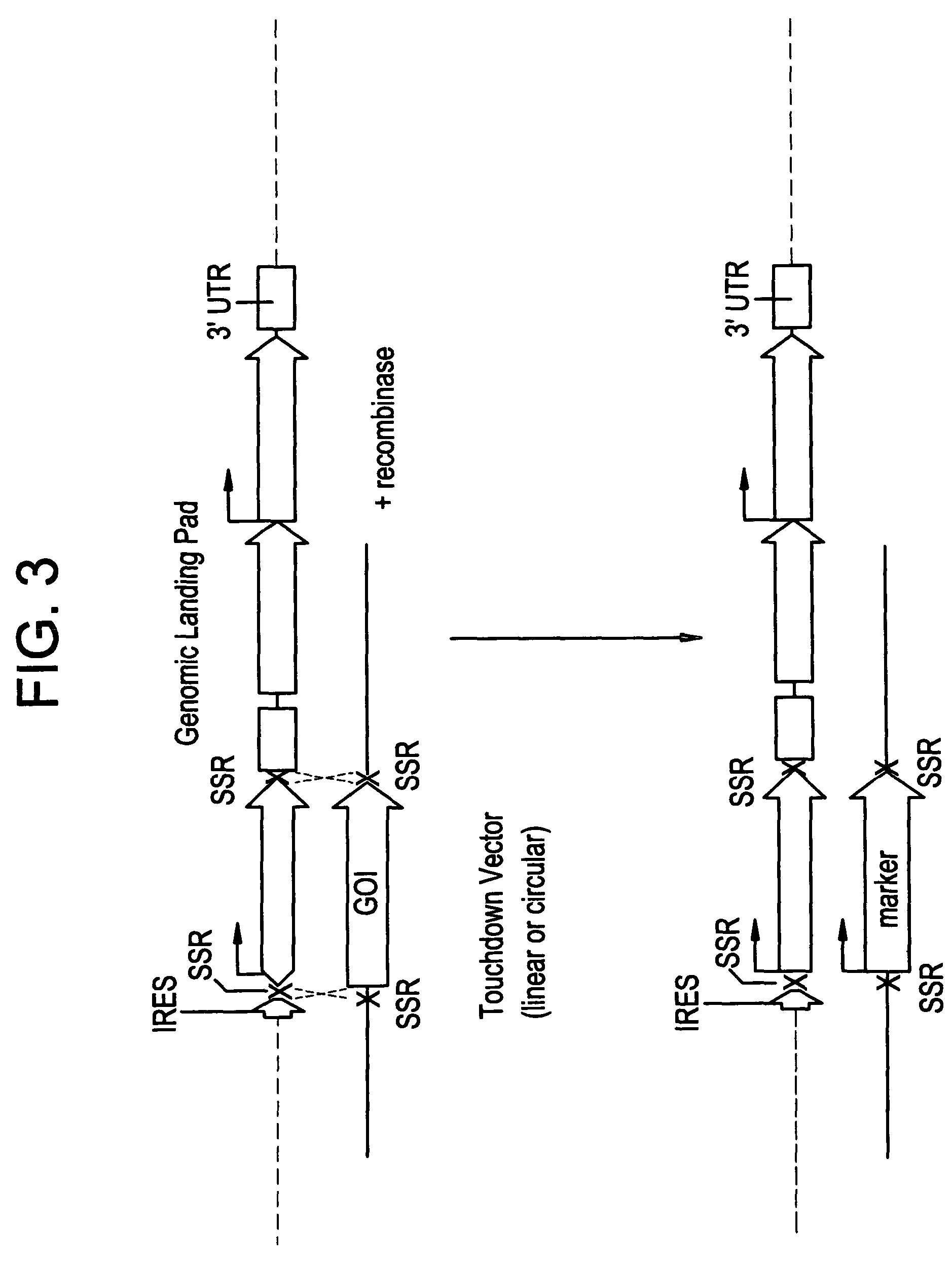IRES enabled gene trapping in plants
a technology of ires and plant genes, applied in the field of dna vectors, can solve the problems of inability to assign gene function by observation of phenotype due to disruption of a gene in the transformed plant, inability to determine the true biological function without biological data, and inability to achieve the effect of reducing the overall size of the vector, reducing the need for transcriptional regulatory elements, and increasing the number of insertions
- Summary
- Abstract
- Description
- Claims
- Application Information
AI Technical Summary
Benefits of technology
Problems solved by technology
Method used
Image
Examples
example 1
Constructs Design
[0081]Series of IRES-mediated expression vectors were constructed using standard molecular biology techniques (Maniatis et al., Molecular cloning: a Laboratory Manual. Cold Spring Harbor Laboratory, New York (1982)). All constructs were built on the basis of proprietary binary vectors family pICBV (pICBV2; pICBV10, see FIG. 7). Schematic presentations of the constructs used in this invention are shown in FIGS. 4-6. The sequences and information concerning all the genes and structural elements used in the invention are available from the series of publications and publicly accessible databases. Integrase PhiC31 and its target sites attP / attB (Thomason et al., Mol Genet Genomics 265,1031-8; WO0107572 (2001)). The construct shown in FIG. 5 is designed for cloning of any sequence of interest using Sac1-Xba1 restriction sites placed between two attP sites, thus creating “touchdown” vector with any sequences of interest to be targeted to “landing pad” site. Different Ac / D...
example 2
Plant Transformation
In Planta Transformation of Arabidopsis thaliana
[0082]The plasmids (carbanicillin-resistant) were immobilized into Agrobacterium tumefaciens (strain GV 2260) by electroporation. The bacterial cells were grown in 300 ml 2YT media with antibiotics, collected by centrifugation and resuspended in 5% sucrose to OD600=0.8.
[0083]A. thaliana plants were grown until flowering. Then flowering bolts of Arabidopsis plants were dipped in Agrobacterium solution under vacuum applied for a few seconds. Transformed plants were kept in a dark place for 24 hours at high humidity and than transferred into the greenhouse. In the case of BAR gene as selectable marker, the seeds were collected 3-4 weeks later, sowed in soil and sprayed with 100 mg / L phosphinothricin, 0.01% Silvet. The treatment was repeated 2-3 times depending on the efficiency of selection and the frequency of late germination events. In the case of NPTII as selectable marker, the harvested seeds were sterilized and ...
example 3
Selection for Expression Profiles
[0085]Primary transformants of Arabidopsis and Brassica were directly used for studying the reporter gene expression pattern in the case of T-DNA based “gene trap” construct. For transposon-based “gene trapping”, self progeny of primary transformants with the highest transposition frequency (number of GUS+ sectors in the X-gluc stained tissue (Jefferson, Plant Mol. Biol. Rep. 5:387-405 (1987)) were used for screening of the expression profiles of interest. The plants showing tissue-, organ-, developmental, inducible or constitutive expression profiles, but having no GUS-stained sectors (no Ac transposase activity) were selected. The detection of GFP expression profiles were performed under microscope with UV light source (Leica, GFP3 filter) or with the help of transferable UV lamp model B 100 AP (UVP, Upland, Calif., USA). The detection of luciferase (LUC) gene expression was determined with the help of fotometric digital system COOLSNAPHQ-M (Roper ...
PUM
| Property | Measurement | Unit |
|---|---|---|
| transfection frequency | aaaaa | aaaaa |
| resistance | aaaaa | aaaaa |
| time | aaaaa | aaaaa |
Abstract
Description
Claims
Application Information
 Login to View More
Login to View More - R&D
- Intellectual Property
- Life Sciences
- Materials
- Tech Scout
- Unparalleled Data Quality
- Higher Quality Content
- 60% Fewer Hallucinations
Browse by: Latest US Patents, China's latest patents, Technical Efficacy Thesaurus, Application Domain, Technology Topic, Popular Technical Reports.
© 2025 PatSnap. All rights reserved.Legal|Privacy policy|Modern Slavery Act Transparency Statement|Sitemap|About US| Contact US: help@patsnap.com



